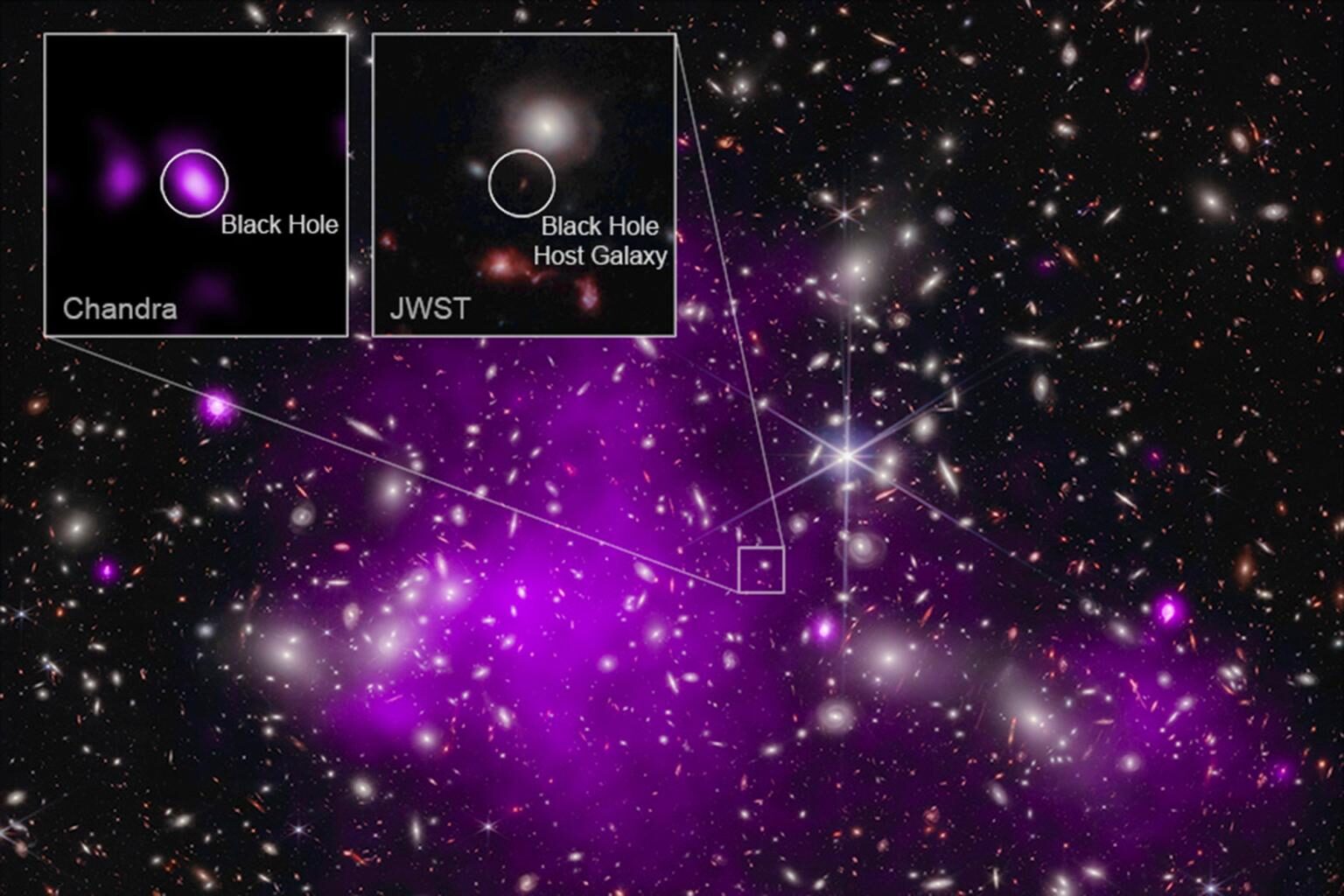
NASA's James Webb Space Telescope and Chandra X-Ray Observatory spent the past year working together to find and confirm the black hole and on Monday, researchers published their findings which confirmed beliefs that supermassive black holes existed at the start of the universe.
They believe the newly-located black hole was formed just 470 million years after the Big Bang and is 10 times larger than the black hole in the Milky Way.
The scientists estimated its weight to be anywhere from 10 to 100% the mass of all the stars in its galaxy, according to the lead author Akos Bogdan of the Harvard-Smithsonian Center for Astrophysics.
"It's just really early on in the universe to be such a behemoth," said Yale University's Priyamvada Natarajan, who took part in the study. "It's astounding how this thing actually is sitting in place already with its galaxy so early on in the universe."
The researchers think the gigantic black hole was created when clouds of gas collapsed in one galaxy next door to a galaxy with stars.
The galaxies combined to form one and the black hole took over.
And the black hole is still growing with blindingly bright gas, Natarajan said.
She believes more and potentially even older black holes are still out there.
"We are expecting a new window to open in the universe, and I think this is the first crack," she said.



Reader Comments
to our Newsletter